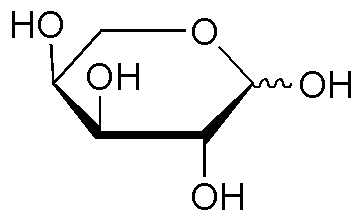L-(+)-Arabinose is widely utilized in research focused on:
- Food Industry: It serves as a low-calorie sweetener and is often used in sugar-free products, providing a healthier alternative to traditional sugars.
- Pharmaceuticals: This compound is used in the formulation of certain medications, enhancing drug delivery and absorption due to its unique sugar structure.
- Biotechnology: L-(+)-Arabinose is utilized in microbial fermentation processes, aiding in the production of biofuels and bioplastics, which contribute to sustainable practices.
- Research Applications: It is commonly used in studies related to carbohydrate metabolism and cell signaling, helping researchers understand various biological processes.
- Cosmetics: The compound is incorporated into skincare products for its moisturizing properties, making it beneficial for maintaining skin hydration.
General Information
Properties
Safety and Regulations
Applications
L-(+)-Arabinose is widely utilized in research focused on:
- Food Industry: It serves as a low-calorie sweetener and is often used in sugar-free products, providing a healthier alternative to traditional sugars.
- Pharmaceuticals: This compound is used in the formulation of certain medications, enhancing drug delivery and absorption due to its unique sugar structure.
- Biotechnology: L-(+)-Arabinose is utilized in microbial fermentation processes, aiding in the production of biofuels and bioplastics, which contribute to sustainable practices.
- Research Applications: It is commonly used in studies related to carbohydrate metabolism and cell signaling, helping researchers understand various biological processes.
- Cosmetics: The compound is incorporated into skincare products for its moisturizing properties, making it beneficial for maintaining skin hydration.
Documents
Safety Data Sheets (SDS)
The SDS provides comprehensive safety information on handling, storage, and disposal of the product.
Product Specification (PS)
The PS provides a comprehensive breakdown of the product’s properties, including chemical composition, physical state, purity, and storage requirements. It also details acceptable quality ranges and the product's intended applications.
Certificates of Analysis (COA)
Search for Certificates of Analysis (COA) by entering the products Lot Number. Lot and Batch Numbers can be found on a product’s label following the words ‘Lot’ or ‘Batch’.
*Catalog Number
*Lot Number
Certificates Of Origin (COO)
This COO confirms the country where the product was manufactured, and also details the materials and components used in it and whether it is derived from natural, synthetic, or other specific sources. This certificate may be required for customs, trade, and regulatory compliance.
*Catalog Number
*Lot Number
Safety Data Sheets (SDS)
The SDS provides comprehensive safety information on handling, storage, and disposal of the product.
DownloadProduct Specification (PS)
The PS provides a comprehensive breakdown of the product’s properties, including chemical composition, physical state, purity, and storage requirements. It also details acceptable quality ranges and the product's intended applications.
DownloadCertificates of Analysis (COA)
Search for Certificates of Analysis (COA) by entering the products Lot Number. Lot and Batch Numbers can be found on a product’s label following the words ‘Lot’ or ‘Batch’.
*Catalog Number
*Lot Number
Certificates Of Origin (COO)
This COO confirms the country where the product was manufactured, and also details the materials and components used in it and whether it is derived from natural, synthetic, or other specific sources. This certificate may be required for customs, trade, and regulatory compliance.


